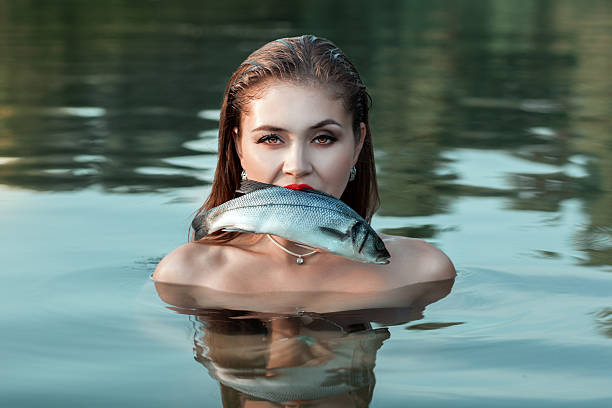The Secret to Eating Delicious Fish
Ever wondered why some fish tastes fresh and delicious, while others taste fishy? This blog explores the Japanese technique of Ikejime and how it enhances the flavor, texture, and quality of the fish.

Tan Man
CEO of Natural Health & Beauty with a PhD in tanning without sunscreen. Helping you to be healthy and enjoy your life. Eat @masa_chips

-
You've been eating fish wrong your entire life
— Tan Man (@reallytanman) April 11, 2023
Ever wondered why some fish tastes fresh & delicious, while others taste, well, fishy?
The secret is Ikejime, a Japanese technique that enhances the flavor, texture, and quality of the fish
To never eat bad fish again, read this: pic.twitter.com/Ktpcvum1Sc -
First, what is Ikejime?
— Tan Man (@reallytanman) April 11, 2023
It's a 300+ year-old Japanese method of humanely killing fish and seafood
It's specifically designed to maintain superior texture and taste of the meat
How does it work? -
Without getting too graphic (because vegans will report me), Ikejime quickly and humanely kills the fish to minimize stress on the animal
— Tan Man (@reallytanman) April 11, 2023
This means the fish doesn't release lactic acid and ammonia at the time of death
Which means it tastes better and stays fresher longer -
Ok maybe the vegans are gone by now, so ti be a little more graphic:
— Tan Man (@reallytanman) April 11, 2023
Ikejime is performed by quickly inserting a thin, sharp spike or wire into the fish's brain
Then the spinal cord is severed and the blood vessels drained
This is an art form in Japan -
And recently it's gained popularity worldwide among professional chefs and fisherman
— Tan Man (@reallytanman) April 11, 2023
Why? Because ikejime maintains the quality of the fish and enhances the dining experience
Benefits of ikejime include: -
1. Minimal stress on the animal
— Tan Man (@reallytanman) April 11, 2023
This one's for the vegans--
Conventional fisheries let the fish brutally suffocate, flapping around for up to 2 hours on deck, until they die
This releases a flood of stress hormones causing gross taste/texture
But Ikejime = quick and painless -
2. Low lactic acid buildup
— Tan Man (@reallytanman) April 11, 2023
As the fish flap around, they exert their muscles which produce lactic acid (just like us)
The acid dissolves the meat, changing the color, and reducing shelf life
Ikejime minimizes lactic acid buildup, making the fish taste delicious 👌 -
3. Reduced risk of spoilage
— Tan Man (@reallytanman) April 11, 2023
The ikejime process includes draining the fish's blood
Blood contains enzymes and bacteria that can degrade the meat and alter its taste
By removing the blood during ikejime like is done with mammals, the fish remains fresher for longer -
4. Preserving texture and color
— Tan Man (@reallytanman) April 11, 2023
Ikejime prevents the breakdown of ATP (adenosine triphosphate) in the fish's muscles
When ATP breaks down, it causes the fish's flesh to soften and lose color
But ikejime is quick and efficient, so there's less ATP breakdown -
5. Enhanced shelf life
— Tan Man (@reallytanman) April 11, 2023
Because of everything we discussed above, fish killed with the ikejime method last longer before spoiling (i.e., becoming "fishy")
This is great news for the restaurant industry, and for you, if you're a patron at a high-end seafood spot -
6. Benefits small business
— Tan Man (@reallytanman) April 11, 2023
You like supporting hard-working people, right? Good, me too
Well fish killed with the ikejime technique command higher prices
As a result, fishermen and suppliers who practice this method can command more money for their labor and efforts -
7. Environmentally friendly
— Tan Man (@reallytanman) April 11, 2023
Ikejime promotes responsible and sustainable fishing practices by encouraging strict, careful handling of the meat and a focus on quality over quantity
This mindset trickles down
More people approaching food this way = a more sustainable industry -
Interested in ikejime and want to support this sustainable, healthy practice? GOOD.
— Tan Man (@reallytanman) April 11, 2023
Here's what you can do:
-Patronize ikejime restaurants (usually high end sushi spots, just ask if they use the practice)
-Buy seafood from fishermen and suppliers who practice ikejime -
-Learn the technique for yourself (check out a website by the name of YouTube)
— Tan Man (@reallytanman) April 11, 2023
-And most importantly, share this thread to spread the word (RT the first tweet, and add it to your bookmarks)
Thanks for reading, and for joining our mission of changing the way the world eats -
PS:
— Tan Man (@reallytanman) April 11, 2023
You said you like supporting small businesses, right?
And you said you like sustainable food practices, right??
Then check out our MASA Chips, made in the USA without a seed oil in sight.
click below:https://t.co/gBTry1ahkR
